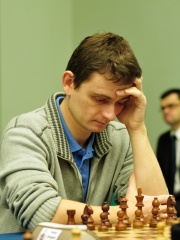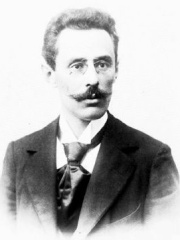
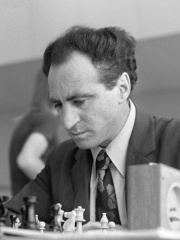
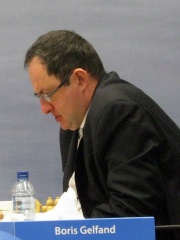

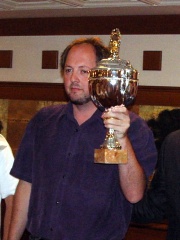
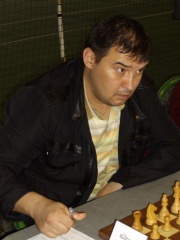
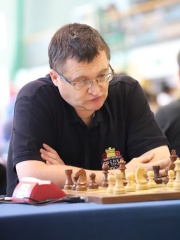
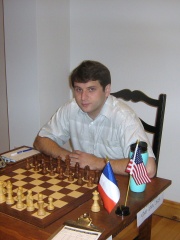
The Most Famous
CHESS PLAYERS from Belarus
This page contains a list of the greatest Belarusian Chess Players. The pantheon dataset contains 461 Chess Players, 12 of which were born in Belarus. This makes Belarus the birth place of the 14th most number of Chess Players behind Armenia, and Serbia.
Top 10
The following people are considered by Pantheon to be the top 10 most legendary Belarusian Chess Players of all time. This list of famous Belarusian Chess Players is sorted by HPI (Historical Popularity Index), a metric that aggregates information on a biography's online popularity. Visit the rankings page to view the entire list of Belarusian Chess Players.

1. Dawid Janowski (1868 - 1927)
With an HPI of 63.21, Dawid Janowski is the most famous Belarusian Chess Player. His biography has been translated into 26 different languages on wikipedia.
Dawid Markelowicz Janowski [ˈd̪avʲit̪ ˈmaʁkəlɔvit͡ʂ ˈjanɔfski] (25 May 1868 – 15 January 1927; often spelled David) was a Polish chess player. Several opening variations are named after Janowski.

2. Lev Polugaevsky (1934 - 1995)
With an HPI of 61.04, Lev Polugaevsky is the 2nd most famous Belarusian Chess Player. His biography has been translated into 26 different languages.
Lev Abramovich Polugaevsky (Russian: Лев Абрамович Полугаевский, IPA: [pəlʊɡɐˈjefskʲɪj]; 20 November 1934 – 30 August 1995) was a Soviet chess player. He was awarded the title of International Grandmaster by FIDE in 1962 and was a frequent contender for the World Championship, although he never achieved that title. He was one of the strongest players in the world from the early 1960s until the late 1980s, as well as a distinguished author and opening theorist whose contributions in this field remain important to the present day.

3. Boris Gelfand (b. 1968)
With an HPI of 56.74, Boris Gelfand is the 3rd most famous Belarusian Chess Player. His biography has been translated into 49 different languages.
Boris Abramovich Gelfand (born 24 June 1968) is a Belarusian and Israeli chess grandmaster. A six-time World Championship candidate (1991, 1994–95, 2002, 2007, 2011, 2013), he won the Chess World Cup 2009 and the 2011 Candidates Tournament, making him challenger for the World Chess Championship 2012. Although the match with defending champion Viswanathan Anand finished level at 6–6, Gelfand lost the deciding rapidplay tiebreak by 2½–1½. Gelfand has won major tournaments at Wijk aan Zee, Tilburg, Moscow, Linares and Dos Hermanas. He has competed in eleven Chess Olympiads and held a place within the top 30 players ranked by FIDE from January 1990 to October 2017.

4. Viktor Kupreichik (1949 - 2017)
With an HPI of 51.92, Viktor Kupreichik is the 4th most famous Belarusian Chess Player. His biography has been translated into 16 different languages.
Viktor Davidovich Kupreichik (Russian: Ви́ктор Давыдо́вич Купре́йчик, Belarusian: Віктар Давыдавіч Купрэйчык, Viktar Davydavič Kuprejčyk; 3 July 1949 – 22 May 2017) was a Belarusian chess grandmaster.
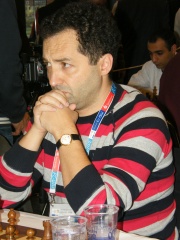
5. Evgeny Agrest (b. 1966)
With an HPI of 47.05, Evgeny Agrest is the 5th most famous Belarusian Chess Player. His biography has been translated into 17 different languages.
Evgeny Agrest (born 15 August 1966 in Vitebsk, Belarus) is a Soviet-born Swedish chess grandmaster (1997). In 1994, he graduated with a degree in Economics and in the same year emigrated to Sweden. He is four-time Swedish champion (1998, 2001, 2003, and 2004), and thrice Nordic champion (2001 jointly with Artur Kogan, 2003 jointly with Curt Hansen, and 2005). In 2010 Agrest tied for 1st–6th in the European Union Championship, taking third place on tiebreak. He played for Sweden in the Chess Olympiads of 1998, 2000, 2002, 2004, 2006, 2008, 2010 and 2014. As of August 2015, he has been Nils Grandelius's trainer since 2013. Agrest is married to Woman International Master (WIM) Svetlana Agrest with both his wife and his daughter playing for the Swedish Women's chess team.

6. Ilya Smirin (b. 1968)
With an HPI of 46.06, Ilya Smirin is the 6th most famous Belarusian Chess Player. His biography has been translated into 21 different languages.
Ilya (or Ilia) Smirin (Hebrew: איליה יוליביץ' סמירין; Belarusian: Ілля Юльевіч Смірын, romanized: Illa Juljevič Smiryn; Russian: Илья Юльевич Смирин, romanized: Ilya Yulievich Smirin; born January 21, 1968) is a Belarusian-Israeli chess player. He was awarded the title of Grandmaster by FIDE in 1990. Champion of Israel in 1992, 2002 and 2023.

7. Aleksej Aleksandrov (b. 1973)
With an HPI of 44.98, Aleksej Aleksandrov is the 7th most famous Belarusian Chess Player. His biography has been translated into 17 different languages.
Aleksej Gennadyevich Aleksandrov (born 11 May 1973) is a Belarusian chess player. He was awarded the title Grandmaster by FIDE in 1997. Aleksandrov is a five-time Belarusian champion and played on the Belarusian national team at the Chess Olympiad, the World Team Chess Championship and the European Team Chess Championship. He competed in the FIDE World Championship in 1998, 1999, 2000 and 2004, and in the FIDE World Cup in 2017.

8. Alexei Fedorov (b. 1972)
With an HPI of 40.98, Alexei Fedorov is the 8th most famous Belarusian Chess Player. His biography has been translated into 16 different languages.
Alexei Dmitrievich Fedorov (Russian: Алексей Дмитриевич Фёдоров, Aleksey Dimitriyevich Fyodorov, Belarusian: Аляксей Фёдараў, Aliaksey Fyodarau; born 5 August 1972) is a Belarusian chess player. He was awarded the titles International Master in 1992 and Grandmaster in 1995 by FIDE. Born in Mogilev, after the dissolution of the Soviet Union, he briefly played for Russia and from 1993 for the Belarusian Chess Federation. Fedorov won the Belarusian Chess Championship in 1993, 1995, 2005 and 2008 and participated in seven Chess Olympiads (1994, 1998, 2000, 2002, 2004, 2006 and 2008) with a performance of 54.3% (+22=32-16). Fedorov competed in the FIDE World Championship in 1999, 2000 and 2002. In 1999 he was knocked out in the fourth round, while in 2000 and 2002 he was eliminated in the first.

9. Yury Shulman (b. 1975)
With an HPI of 39.04, Yury Shulman is the 9th most famous Belarusian Chess Player. His biography has been translated into 17 different languages.
Yuri Markavich Shulman (born April 29, 1975) is a Belarusian American chess player who holds the FIDE title of Grandmaster (GM).
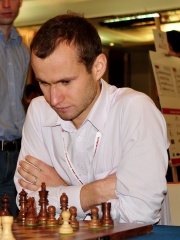
10. Sergei Zhigalko (b. 1989)
With an HPI of 36.17, Sergei Zhigalko is the 10th most famous Belarusian Chess Player. His biography has been translated into 18 different languages.
Sergei Alexandrovich Zhigalko (Belarusian: Сяргей Аляксандравіч Жыгалка, Syarheĭ Aliaksandravič Zhyhalka; born March 28, 1989) is a Belarusian chess player who holds the FIDE title of Grandmaster. He is a three-time national champion and also a European and world champion in his age category. Zhigalko competed in the FIDE World Cup in 2007, 2011, 2015 and 2017.
People
Pantheon has 12 people classified as Belarusian chess players born between 1868 and 1994. Of these 12, 9 (75.00%) of them are still alive today. The most famous living Belarusian chess players include Boris Gelfand, Evgeny Agrest, and Ilya Smirin. The most famous deceased Belarusian chess players include Dawid Janowski, Lev Polugaevsky, and Viktor Kupreichik. As of April 2024, 1 new Belarusian chess players have been added to Pantheon including Vladislav Kovalev.
Living Belarusian Chess Players
Go to all RankingsBoris Gelfand
1968 - Present
HPI: 56.74
Evgeny Agrest
1966 - Present
HPI: 47.05
Ilya Smirin
1968 - Present
HPI: 46.06
Aleksej Aleksandrov
1973 - Present
HPI: 44.98
Alexei Fedorov
1972 - Present
HPI: 40.98
Yury Shulman
1975 - Present
HPI: 39.04
Sergei Zhigalko
1989 - Present
HPI: 36.17
Sergei Azarov
1983 - Present
HPI: 35.33
Vladislav Kovalev
1994 - Present
HPI: 32.71
Deceased Belarusian Chess Players
Go to all RankingsDawid Janowski
1868 - 1927
HPI: 63.21
Lev Polugaevsky
1934 - 1995
HPI: 61.04
Viktor Kupreichik
1949 - 2017
HPI: 51.92
Newly Added Belarusian Chess Players (2025)
Go to all RankingsOverlapping Lives
Which Chess Players were alive at the same time? This visualization shows the lifespans of the 3 most globally memorable Chess Players since 1700.

